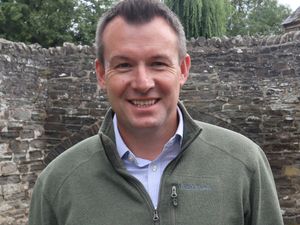Toxic weed dubbed 'most dangerous plant in Britain' removed from popular Ludlow walking spot
Toxic hogweed – dubbed "the most dangerous plant in Britain" – that was discovered on the banks of a popular walk in South Shropshire has been removed.
The giant hogweed was discovered this week on the banks of the River Teme in Ludlow.
Volunteers from the Friends of Whitcliffe Common, working in protective clothing, undertook the task of getting rid of 10 of the weeds found growing on what is known as Fisherman’s Path on the Breadwalk.
Work party leader Rick Summers said: "Once we learned of the presence of the hogweed we marked off the area to protect the public, putting up warning notices. Then we set about digging up the plants, cutting them up into plastic bags, before taking them to the Craven Arms amenity site. Because of the toxic nature of the hogweed it cannot be disposed of in the usual green waste bins."
Parents haver been advised to be on their guard for signs of the dangerous and invasive giant hogweed this summer.
Giant hogweed – also known as Giant Cow Parsley or Hogsbane – has caused several children to be hospitalised with third-degree burns in previous years, after they brushed against its toxic stem.
The stem of the towering plant holds a sap that causes the skin to become extremely sensitive to sunlight, resulting in excruciating blistering and weeping sores.
After making contact with the plant the effects can last for years, meaning every time the skin is exposed to UV rays the blisters will return.
The NHS advises those who come in contact with Giant Hogweed to cover the affected area and wash it with soap and water.
While there is no law enforcing its removal, it is an offence to plant or cause it to grow in the wild.
Mr Summers added: "We will be keeping a careful watch to ensure that there are no other plants along the riverbank. We are aware of the risk to the public and will be doing everything we can to minimise that risk. We would be grateful if the public help by also watching out for any other plants.”
This is the second invasive plant which the Friends of Whitcliffe are battling to clear from the common. For the past 10 years they have been removing areas of Himalayan Balsam – another plant first brought in by the Victorians for ornamental reasons. Balsam can now be found on most riverbanks in Britain. Like hogweed it is fast growing and can crowd out native species.




